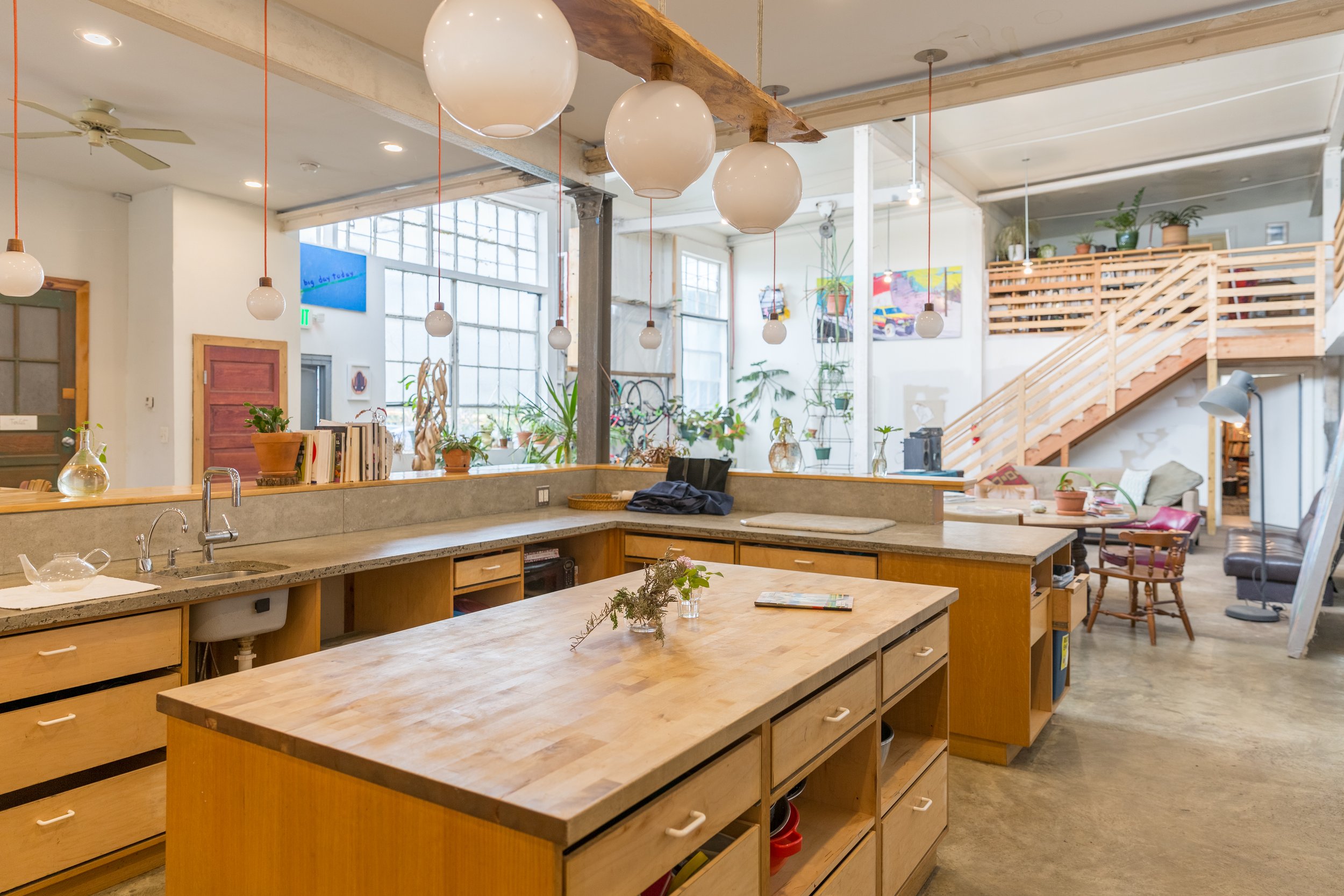
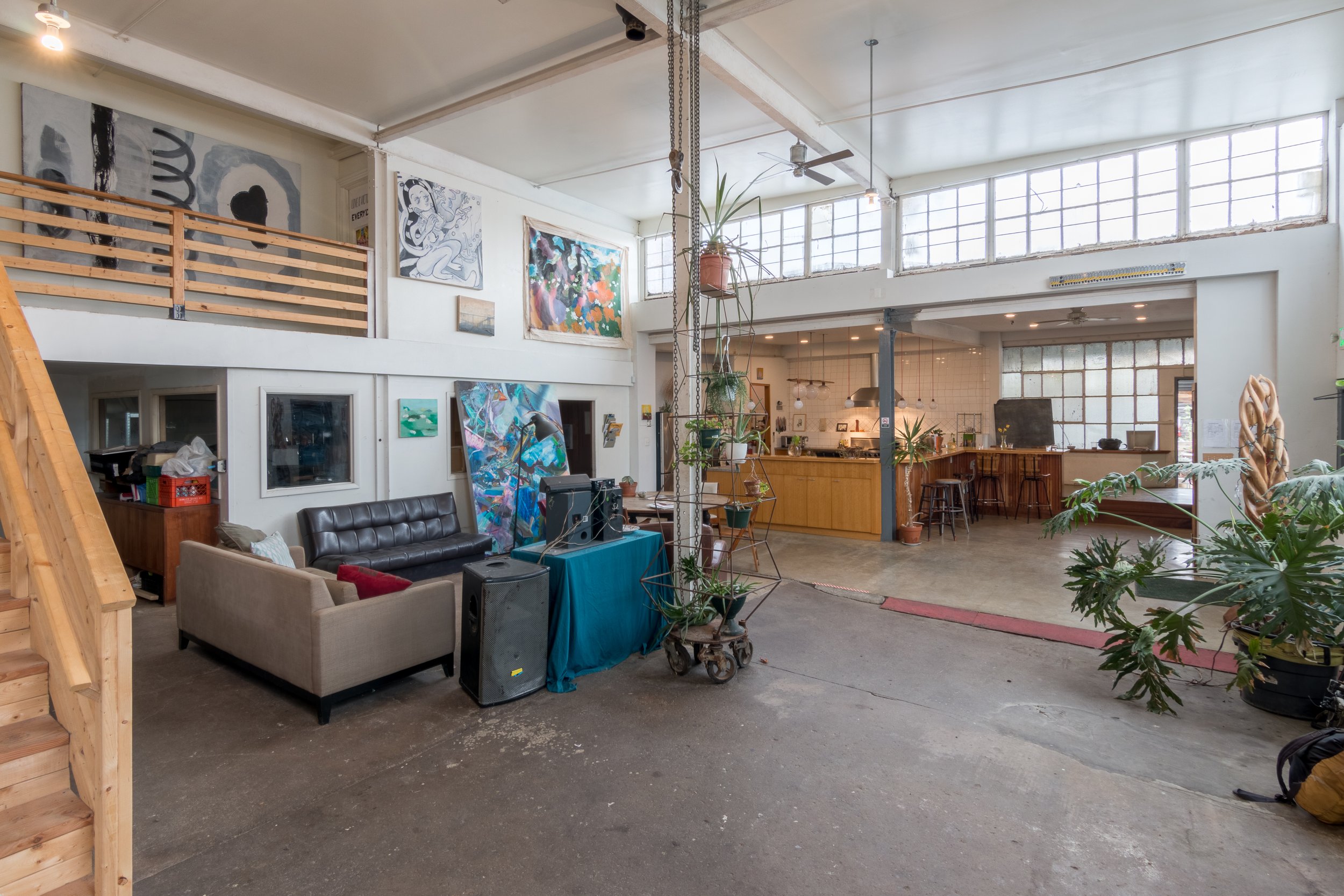
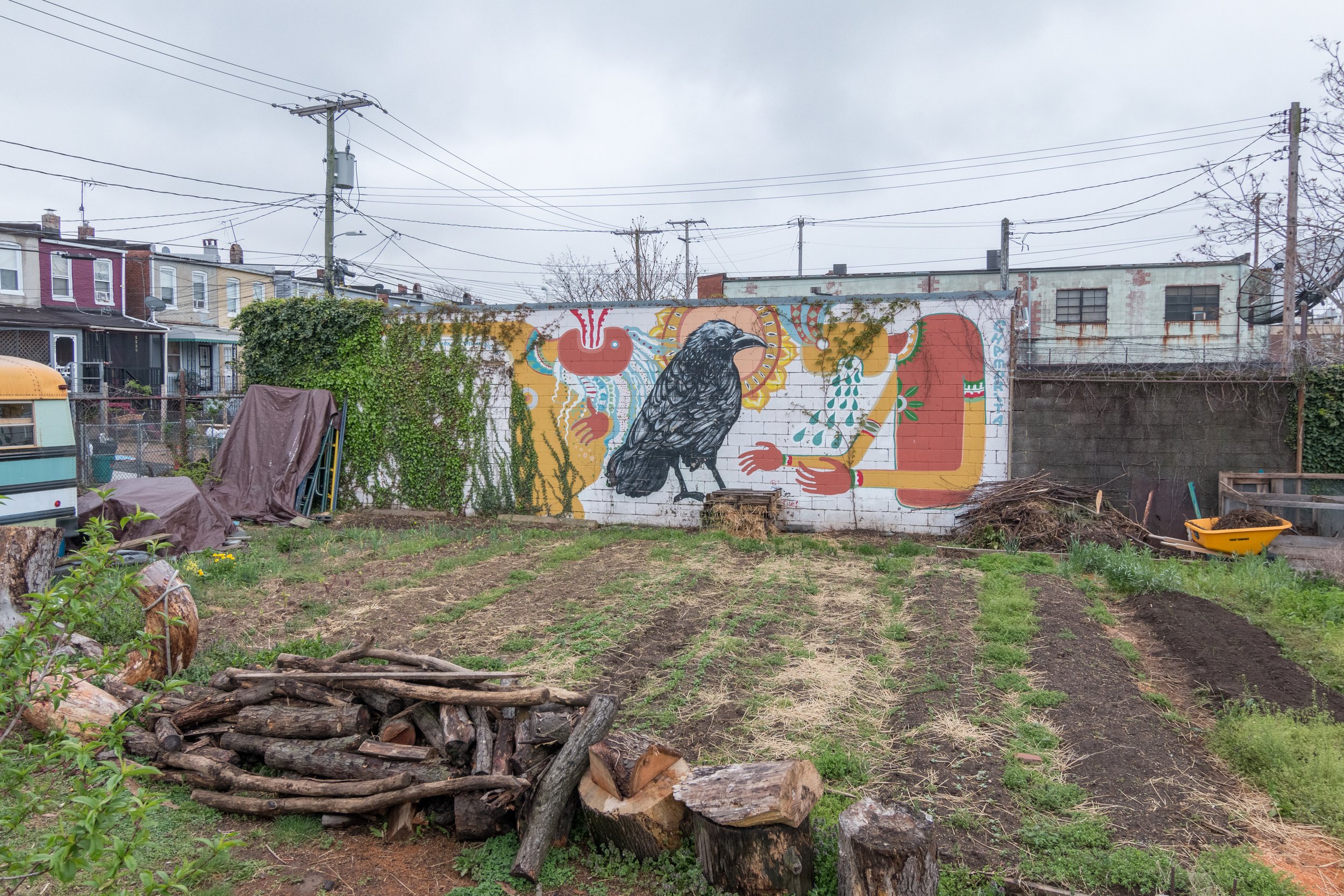
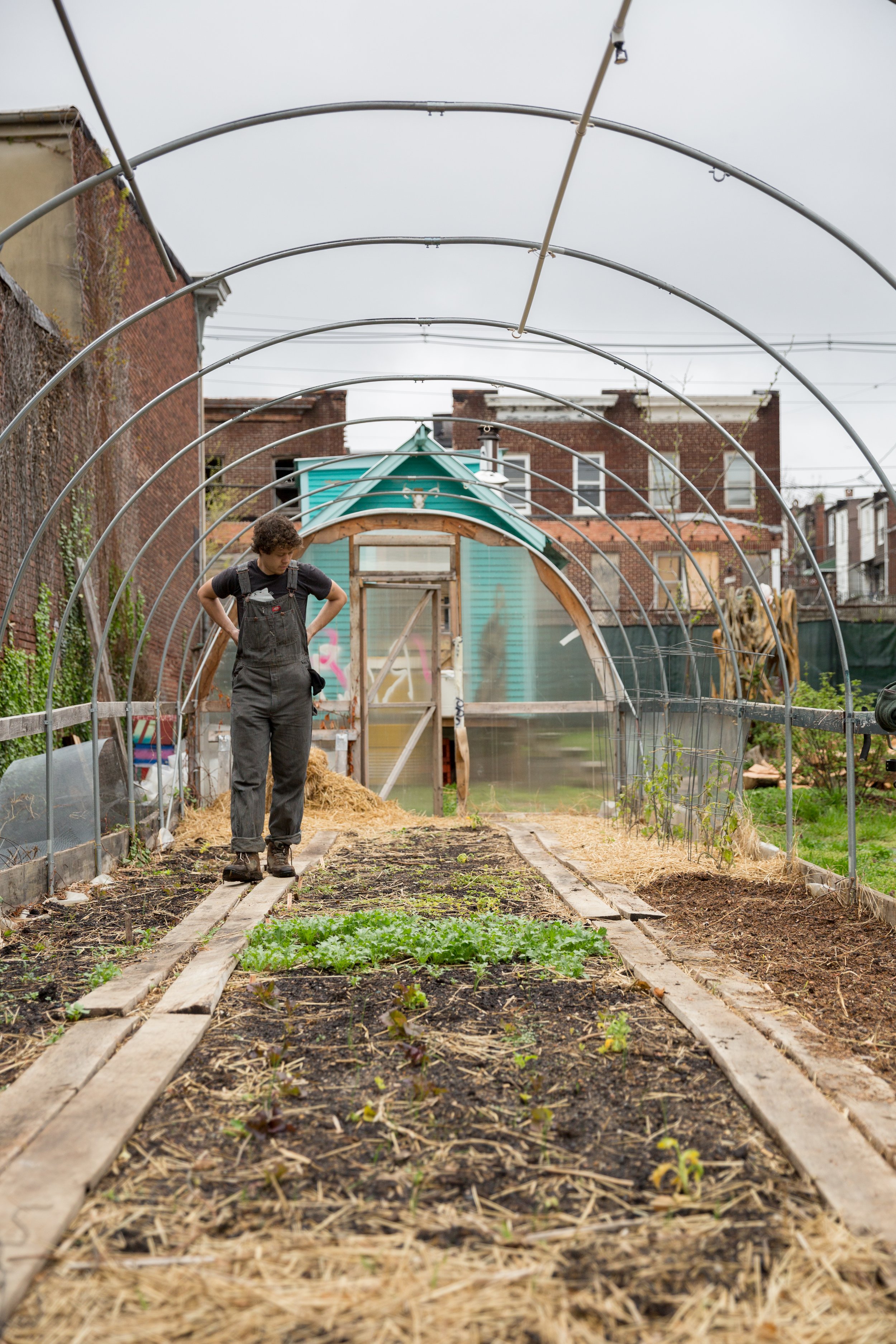
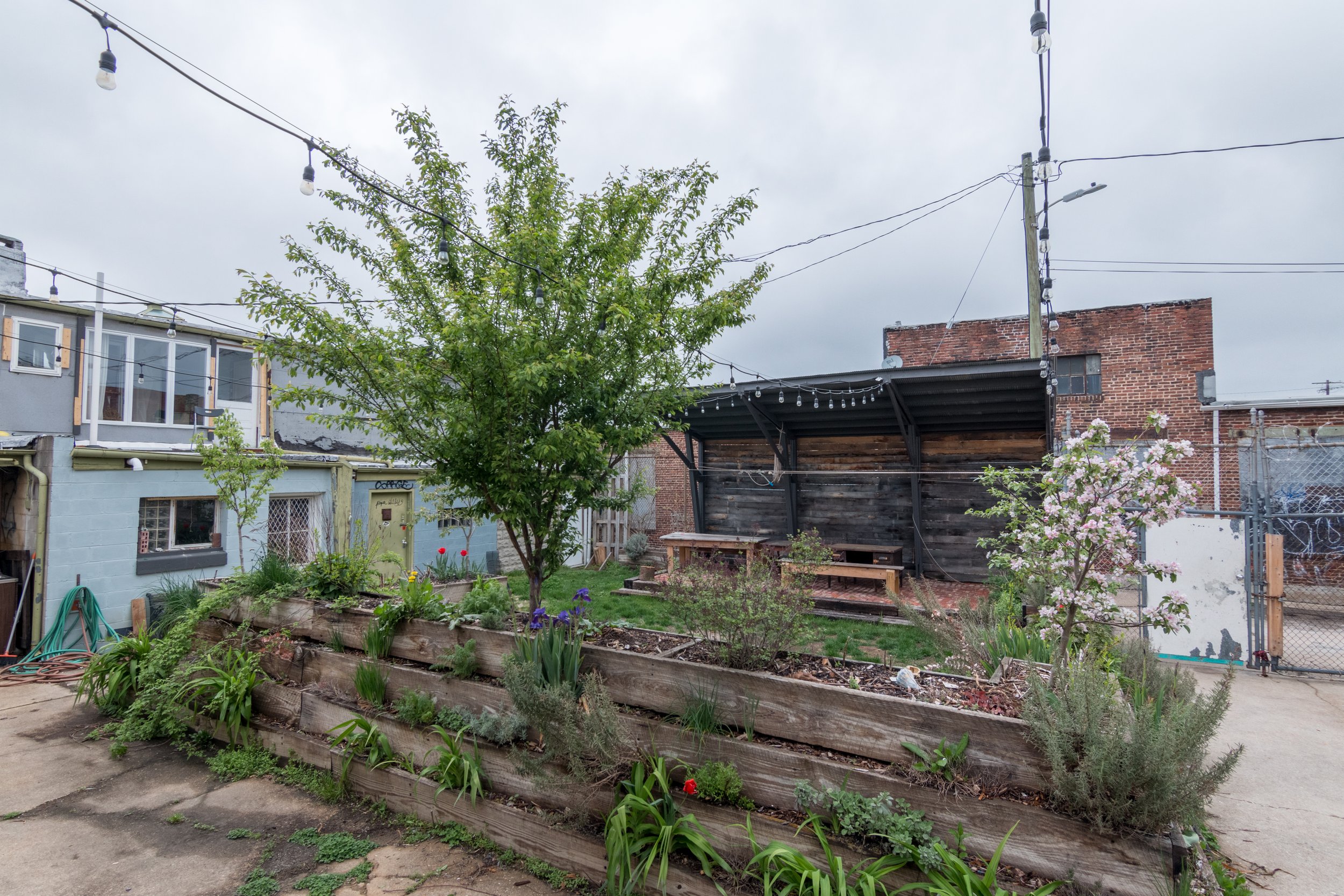

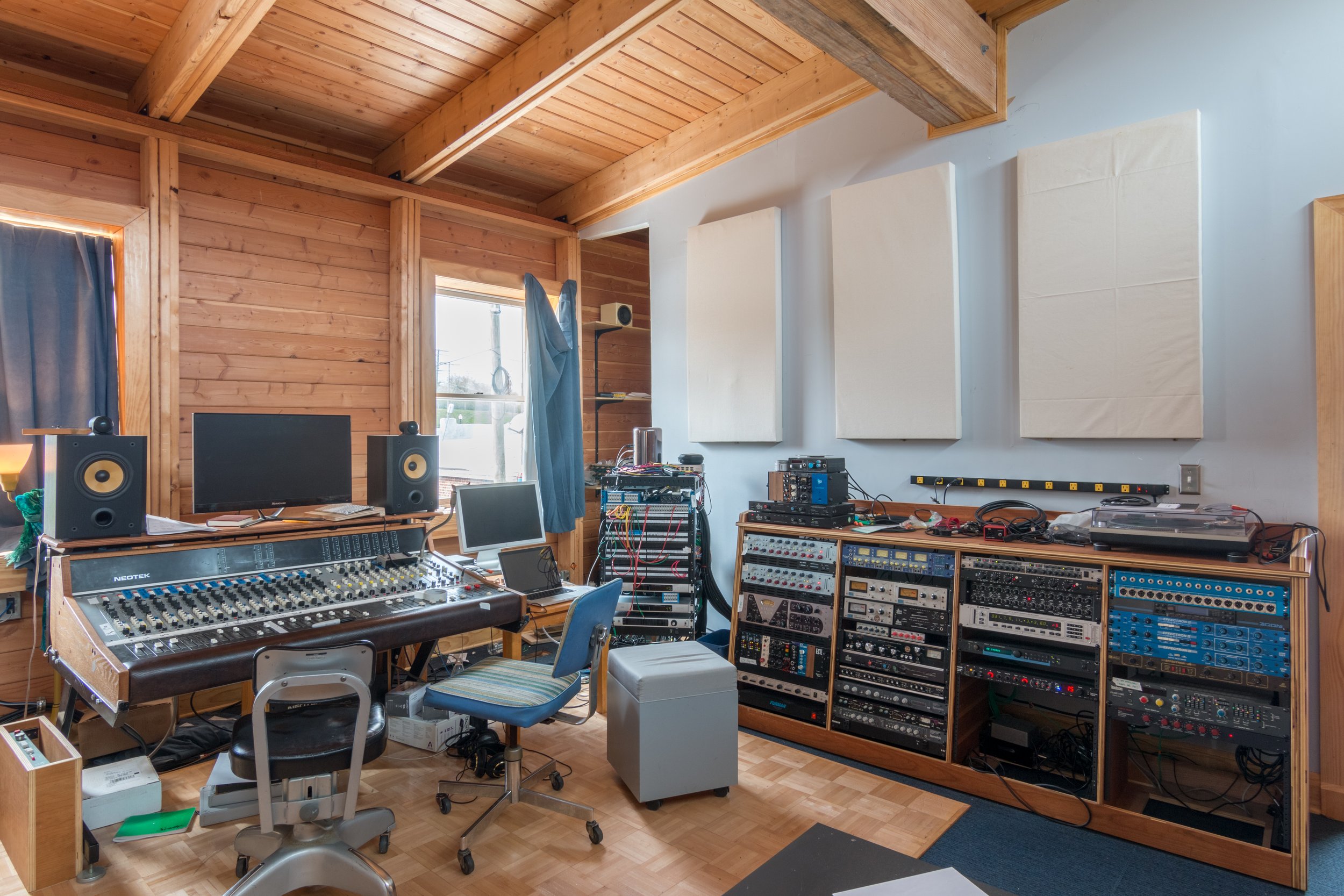
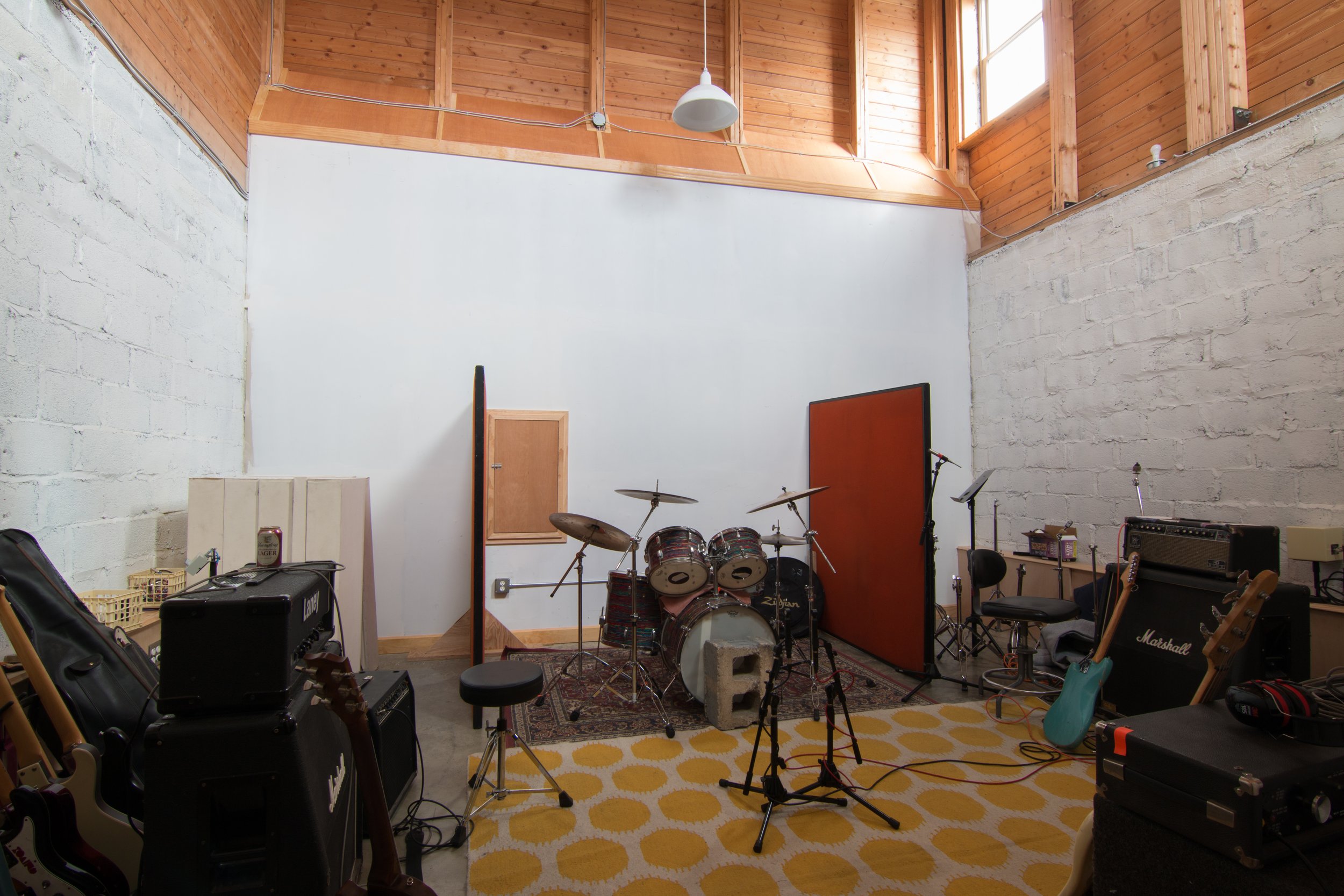

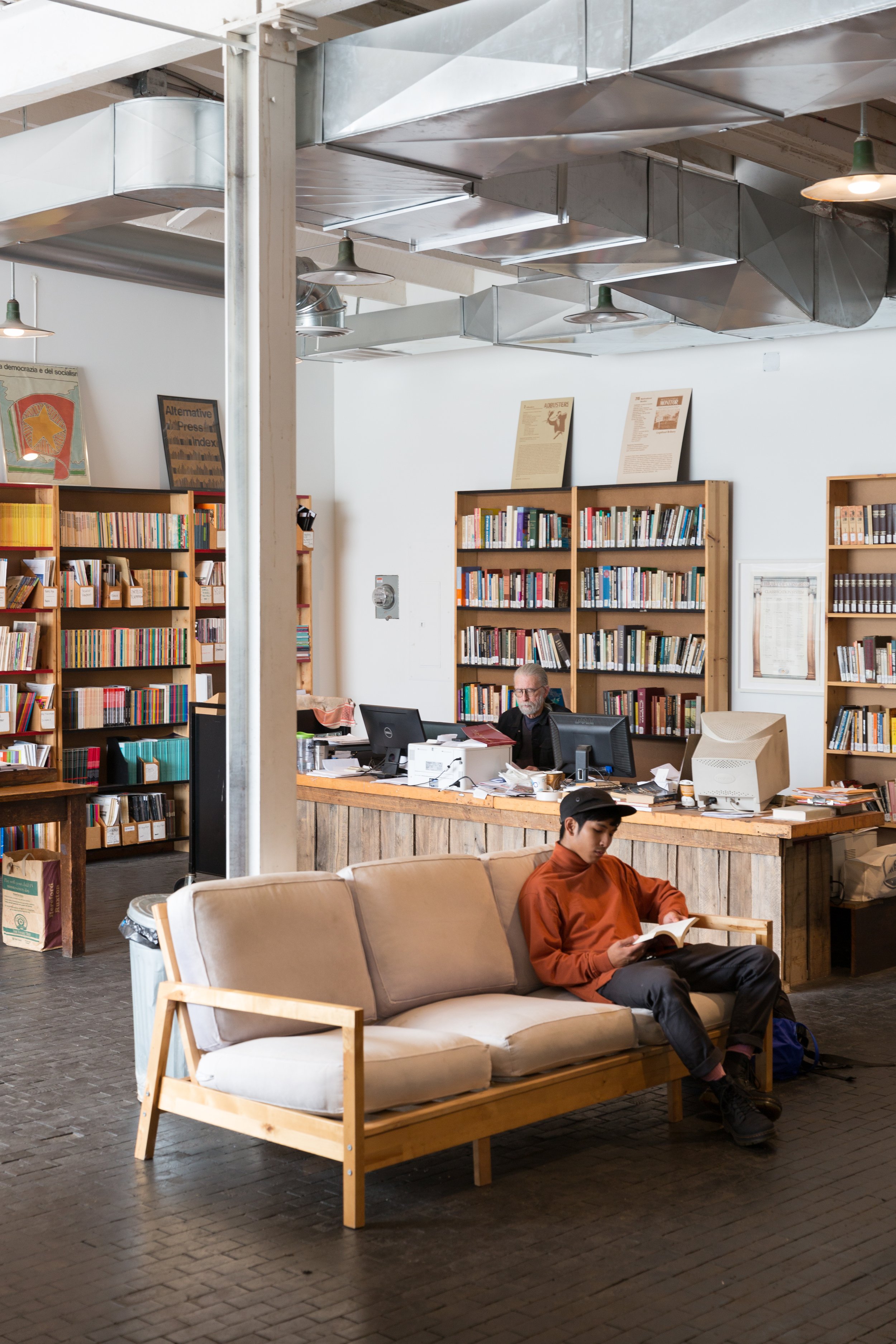

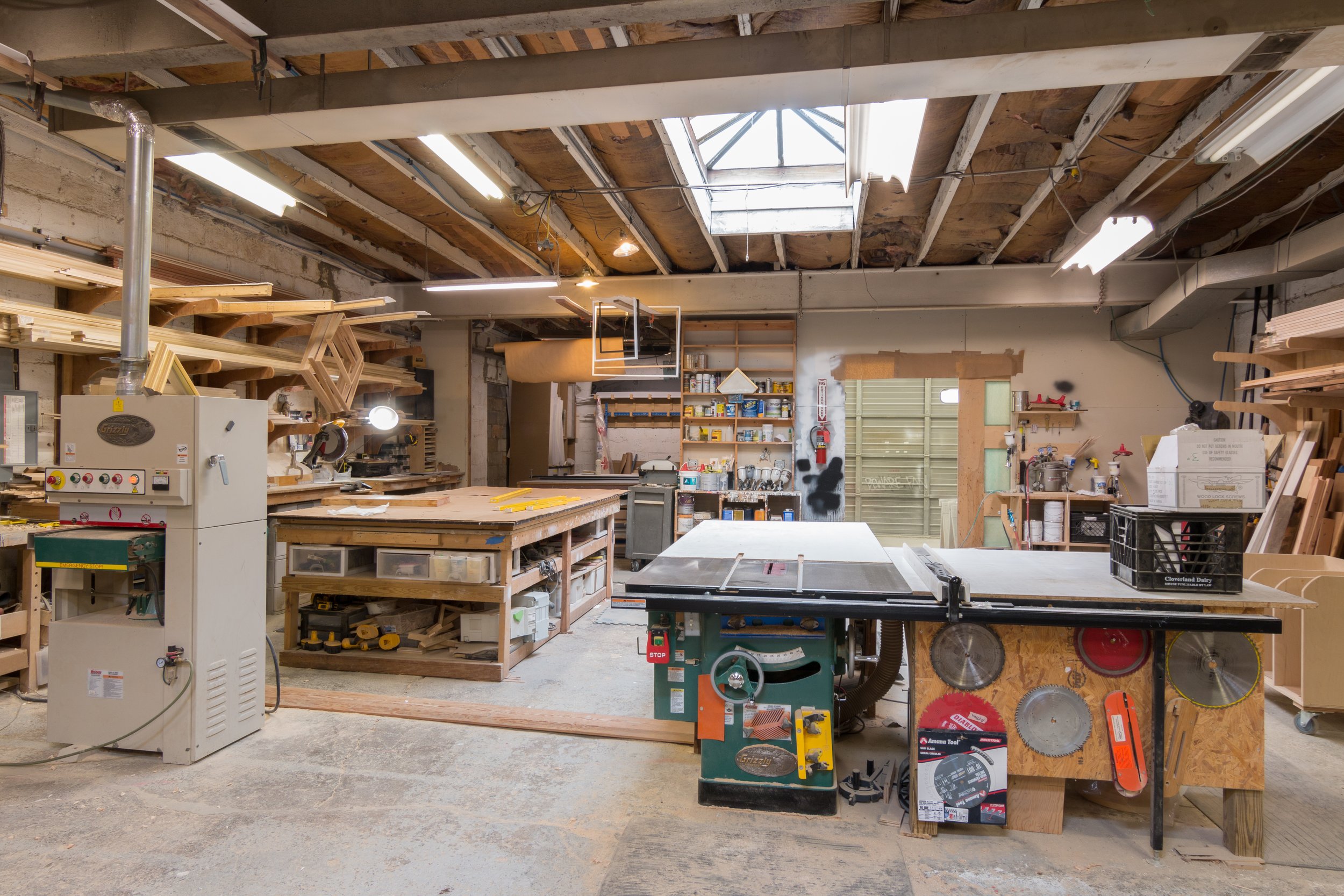
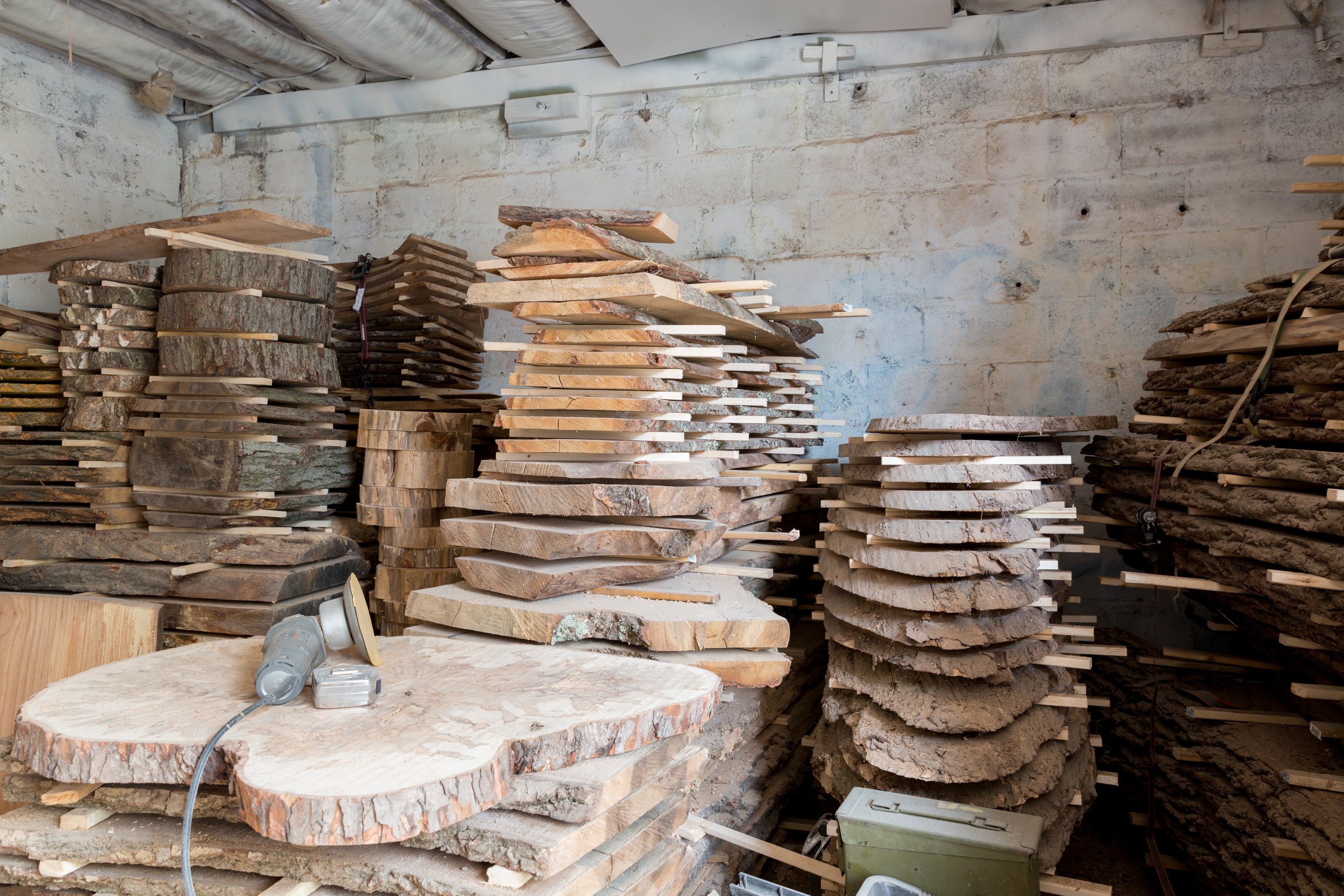
Who We Are
Founded in 2010, The Compound is an artist-led 501(c)3 that supports radical artistic production through experiments with physical, social, and urban space. We develop and maintain a complex of spaces built on values of sustainability, accessibility, and the experimental intersection of art with everyday life. The Compound is curating an ongoing series of public facing dialogical programs that foster meaningful inquisition and critical discourse between artists and community members.
OUR STORY
In 2010, a group of Baltimore artists purchased a vacant forklift factory in East Baltimore. Before it became the Compound, this 20,000 square-foot complex was a blighted reminder of the neighborhood’s neglect; it had been vacant for more than six years. In collaboration with local artists and members of the community—without outside investment and largely through sweat equity—the vacant forklift factory was transformed into a multi-purpose community hub. Over the years, the Compound has employed residents, artists and neighbors in the design and building of space, the production of art, and the curation of exhibitions and experiences. Through mentorship, projects, exhibitions, workshops, and mutual aid, we share skills, ideas, and resources with each other and our neighbors. Today, the Compound provides accessible studios and apartments to working artists, affordable work space to artisans and nonprofits, and an ongoing series of art exhibitions, artist talks, musical performances, and workshops to Baltimore’s creative community.
OUR VALUES
Accessible space for artistic production
Experimentation with elements of everyday life—domesticity, economics, culture, community, ecology, and urban space
Environmental sustainability
Collective action
Critical discourse
Past residents
Garden Collective
Rabbit Coop: Alex Haworth, Molly Porter, Jesse Klompus
Chicken Collective
Kitt Repass: https://www.linkedin.com/in/kitt-repass-85867761/
Marlon Ziello: https://www.ziello.com
Dane Nester: https://www.instagram.com/danenester/?hl=en
Scott Berzofsky: https://act.mit.edu/about/people/scott-berzofsky/
Merrell Hambleton: https://www.mica.edu/research/center-for-social-design/people/merrell-hambleton-15/
Mary Dwan: https://www.instagram.com/casual.asides/
Katie Bachler
Camp Baltimore
Baltimore Development Cooperative: https://creativetime.org/summit/author/baltimore-development-cooperative/
Oak Hill Honey: https://baltimorefishbowl.com/stories/the-buzz-oak-hill-honey/
Lotfy Nathan: https://creative-capital.org/artists/lotfy-nathan/
Michael Petruzzo: https://www.linkedin.com/in/michaelpetruzzo/
Ben Mckee
HOST
Mutual Reality
Will Judge
Kevin Omera: https://wildfirewildfire.com/video-hippos/
DJ Rice: https://djrt.tumblr.com
Marc Gallant
Andrew Laumann: www.laumann.work/
Fred Sharmen
Vishwam Velandy: https://www.imdb.com/name/nm6906797/
Katie Ball
Erika Ceruzzi: https://erikaceruzzi.com
Ed Schrader: https://www.edschradersmusicbeat.com
Sarah Jacoby: https://www.thesarahjacoby.com
Nick Barna: https://www.instagram.com/atelier_nick_barna/?hl=en
Jeremy Hyman: https://www.discogs.com/artist/958931-Jeremy-Hyman
Cheryl Carmona: http://boonestreetfarm.blogspot.com/p/about.html
Nicholas Petr: https://www.linkedin.com/in/nicholas-petr-2a6112a7/
Kyle Lanning: https://www.lanningsmith.com
Chain and the Gang: https://www.discogs.com/artist/1447437-Chain-And-The-Gang
Lang Horn
Sprayer
Alex Dondero: https://www.lqqkstudio.com
DJ Merlo: https://soundcloud.com/deejaymerlo
Oak Hill Center For Education And Culture: https://www.facebook.com/oakhillcenter/
Therron Fowler
FAQ:
DOES THE COMPOUND HAVE A RENTAL LICENSE?
Yes, as of 2025, the Compound has an active rental license. It was first acquired in 2021. There was a brief period of time in 2023 where our license had expired, but that was quickly resolved by submitting the correct paperwork. Though it seems difficult to communicate this point, the Compound is a nonprofit entity that is sustained largely by part-time staff and volunteer labor. We do our best to stay ahead of the administrative demands of this space.
Far from ignoring the requirements of legal rental, we led the effort to get the style of communal housing (living with more than four non-related individuals) approved by city law. In 2018 we encountered a major hurdle to the Compound becoming an "above ground" space: an old city zoning code that made communal housing illegal. In 2019, we drafted a proposal and testified in front of the Baltimore City Board of Municipal and Zoning Appeals (BMZA, appeal #2019-207) for a conditional zoning variance to make collective rooming units legal. Until that point, it would have been fundamentally impossible for us to acquire a rental license.
In 2020, the Compound received its Use & Occupancy certificate. During this time we also applied for, and were granted a Live Entertainment license so that we could legally host events at the space. During this same period in 2020, we began the application for a rental license, which requires residential rental units to be registered, inspected, and licensed to ensure that they meet basic safety and maintenance requirements. We are currently up to date on licensing for all of our residential units.
HOW IS THE COMPOUND GOVERNED?
“The Compound” – a collection of buildings that are part of the 2239 Kirk Avenue property – was purchased by Nick Wisniewski and Marlon Ziello in 2010. For the first 7 years of its existence, the core of the space was a rotating, self-managed group of 8–12 artist-residents.
In response to the threat of closure by the City in 2017, the 501(c)3 was formed. This structure enabled this group of artists to raise money and make $800K+ worth of necessary code compliance upgrades to keep the building open and artists housed. As required by law, the Compound 501(c)3 is directed by a 5-member board (4 of whom are former Compound tenants).
Until 2023, the board had a very limited role: establishing bylaws, meeting quarterly, and approving the annual operating budget. It has never, historically, had any say in who lives in or leaves the residential space. Members of the communal living space have had total agency to self-manage their group, host events, and pursue a self-defined artistic mission.
HAVE TENANTS EVER BEEN EVICTED FROM THE COMPOUND?
Unfortunately, yes. One tenant (during our 13-year history) was formally evicted (by the Compound 501(c)3) from the space in November 2023. This individual lived at the Compound for six months, and during this time never paid rent.
Between 2022 and 2023, four individual tenants were asked to leave by other members of the communal living space. You may hear the communal space referred to as the “the Compound,” but neither staff nor the board had a say in these decisions, nor the terms of these tenants’ departures.
In August 2023, an unprecedented level of internal conflict led the board to step in—for the first time—in the operations of the communal living space. Tenants had approached staff with serious concerns for their psychological and physical safety. Residents were accusing other residents of non-consensual touching, racism, transphobia, verbal abuse, theft, invasion of privacy, and destruction of property. It became increasingly clear that psychological harm was being done and physical harm was a real possibility. We tried to facilitate third party mediation, but certain tenants wouldn’t agree to participate.
After a serious and uncomfortable process, the board made the decision to suspend the Compound’s communal living program. The four tenants who were still living in the space at this time (three of the seven chose to depart of their own accord) were asked to leave. They were given two months notice—the State's legal requirement for landlord-terminated, month-to-month leases. We offered these tenants free moving services to mitigate the financial burden of moving, and forgave back rent.
Again, no option felt clearly right: Should we continue to subject current mates to a harmful living space? Assess conflicting accounts and favor certain tenants over others? Or ask all tenants to find new housing in an increasingly expensive city? Of course, harm was caused by our decision. But we also believe that we made the best decision with the information we had at the time.
WHO OWNS THE COMPOUND?
The Compound 501(c)3 has no ownership. It is directed by a board, consisting of the following members: Nicholas Wisniewski, Marlon Ziello, Derrick Adams, Merrell Hambleton, and Dane Nester. The property of the Compound is owned by Nicholas Wisniewski and Marlon Ziello's company, WZ LLC.
HOW IS THE COMPOUND FUNDED?
From 2010 to 2017, the space was developed entirely through sweat equity and volunteer labor from artists living and working at the space. The Compound 501(c)3's operating expenses—which include utilities, building rent, property taxes, maintenance, licensing and permits, insurance, staff salaries, etc.—are largely covered by rental income and program revenue.
Since 2017 the physical spaces of the Compound have been upgraded with the support of capital grants from the State of Maryland and local foundations.
In 2025, we are grateful to receive programmatic and operating support from the following institutions: Goldseker Foundation, Deutsche Foundation, National Endowment for the Arts, Maryland State Arts Council, and the United Way of Central Maryland.
